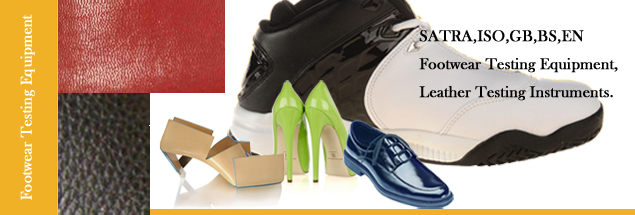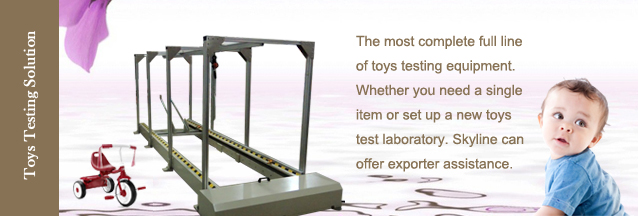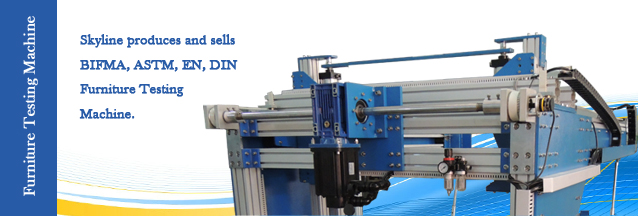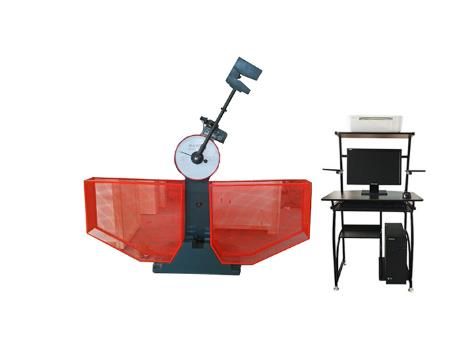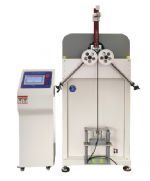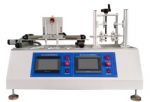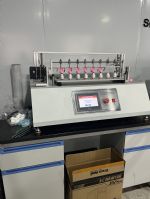 Toys Testing Equipment
Toys Testing Equipment Footwear Testing Equipment
Footwear Testing Equipment Tensile Testing Machine
Tensile Testing Machine Environmental Test Chamber
Environmental Test Chamber Building Material Flammability Test Equipment
Building Material Flammability Test Equipment Paper Testing Equipment
Paper Testing Equipment Spectacle Frames Testing Equipment
Spectacle Frames Testing Equipment Oil Analysis Testing Equipment
Oil Analysis Testing Equipment Lab Test Equipment
Lab Test Equipment Electronic Testing Equipment
Electronic Testing Equipment Stationery Testing Equipment
Stationery Testing Equipment Flammability Test Equipment
Flammability Test Equipment Furniture Testing Machine
Furniture Testing Machine Textile Testing Equipment
Textile Testing Equipment
 Toys Testing Equipment
Toys Testing Equipment Physical & Mechanical Testing
Physical & Mechanical Testing Flammability Testing
Flammability Testing Clamps for Toys Testing
Clamps for Toys Testing Electronic Toy Testing Equipment
Electronic Toy Testing Equipment ISO8124-4,EN71-8
ISO8124-4,EN71-8 Footwear Testing Equipment
Footwear Testing Equipment Fatigue Testing Equipment
Fatigue Testing Equipment Flexing Test Equipment
Flexing Test Equipment Impact Testing Equipment
Impact Testing Equipment Abrasion Testing Equipment
Abrasion Testing Equipment Waterproofness Tester
Waterproofness Tester Friction & Slip Testing
Friction & Slip Testing Tensile Testing Machine
Tensile Testing Machine Environmental Test Chamber
Environmental Test Chamber Building Material Flammability Test Equipment
Building Material Flammability Test Equipment Paper Testing Equipment
Paper Testing Equipment Spectacle Frames Testing Equipment
Spectacle Frames Testing Equipment Oil Analysis Testing Equipment
Oil Analysis Testing Equipment Lab Test Equipment
Lab Test Equipment Electronic Testing Equipment
Electronic Testing Equipment Stationery Testing Equipment
Stationery Testing Equipment Flammability Test Equipment
Flammability Test Equipment Furniture Testing Machine
Furniture Testing Machine Mattress Testing Machine
Mattress Testing Machine Table Testing Machine
Table Testing Machine Chair Testing Machine
Chair Testing Machine Textile Testing Equipment
Textile Testing Equipment Fabric and Garment Testing Instruments
Fabric and Garment Testing Instruments Color Fastness Testing Equipment
Color Fastness Testing Equipment
Microcomputer Controlled Impact Testing Machine
Microcomputer Controlled Impact Testing Machine of Lab Test Equipment
Equipment Use of Lab Test Equipment:
The computer-controlled impact testing machine is used to measure the impact resistance of metal materials under dynamic load, so as to judge the properties of materials under dynamic load. The absorbed energy of the sample is obtained by the way the difference between the potential energy before the pendulum impact and the residual potential energy after the impact is displayed on the dial. The maximum impact energy is 300J, and a 150J pendulum is attached, and the section of the sample used is (10×10) mm. This machine has large impact energy and is suitable for ferrous metals with high impact toughness, such as steel and its alloys.
This machine is a semi-automatic control testing machine. The electrical appliances control automatic swing, impact and swing. It is easy to operate and has high work efficiency. After the sample is broken, the remaining energy is used to automatically lift the pendulum and prepare for the next impact test. Therefore, it can better reflect its advantages in the laboratory that continuously conducts impact tests and the metallurgical and machinery factories that do a large number of impact tests.
This machine is equipped with a computer and a printer, with dual control and dual display functions. The machine adopts PLC automatic control and measurement, and calculates according to the reverse lift angle of the pendulum after breaking the sample measured by rotary weaving, and automatically displays the reverse lift angle β value and the absorption work done by the pendulum to the sample, and Impact toughness ak value, can edit data and generate test report through computer and special data processing and control software, can also store and print test data, average work of three tests, test time and serial number, etc. remote transmission.
The main body of the machine is made of cast steel, which makes it rigid and stable during the whole test process, with strong impact resistance, not easy to deform, accurate test results and long service life. The use of high torque clutch and high power motor makes it more stable and vibration-free when taking and placing the pendulum.
Reference Standard of Microcomputer Controlled Impact Testing Machine:
This machine complies with JJG 145-2007 "Verification Regulations of Pendulum Impact Testing Machine". It can meet the requirements of international standards such as American Standard, European Standard ASTM E23, EN 10045, ISO 148, ISO 83 and so on.
Technical Specifications of Microcomputer Controlled Impact Testing Machine:
1. Impact energy: 300J 150J
2. Dial scale range and division value: Energy range: 0-300J 0-150J
Graduation value per small division: 2J 1J
3. Pendulum moment: 0-300J M=160.7695N.m 0-150J M=80.3848N.m
4. Pendulum pre-lifting angle: 150°
5. Distance from the rotation center of the pendulum axis to the impact point (sample center): 750mm
6. Impact speed: 5.2m/s
7. Span of sample support: 40mm
8. Fillet of support jaws: R (1.0~1.5) mm (1mm is for special order)
9. Blade curvature radius: R (2.0~2.5) mm (8mm is for special order)
10. Inclination angle of the support surface of the sample support: 11°
11. The included angle of the impact blade: 30°
12. Thickness of impact blade: 16mm
13. Angle measuring range: 0-360°
14. Angular resolution: ≤0.06°
15. Specimen size: 10×10 (7.5 or 5)×55 mm
16. Dimensions of the host (length × width × height): (2150 × 640 × 1400) mm
17. Equipment Net weight: about 420Kg
18. Power supply: three-phase four-wire system 380V 50Hz 400W Main motor 250W
19. Working conditions:
(1) The room temperature is within the range of 20°C±5°C;
(2) The relative humidity is not more than 85%;
(3) In an environment with no corrosive medium, no vibration, and no strong electromagnetic field interference around;
(4) Installed on a concrete foundation with a thickness of not less than 200mm or fixed on a foundation greater than 1400Kg;
(5) Adjust the levelness of the installation reference surface on the base to within 2/1000.
Main Equipment Configuration of Microcomputer Controlled Impact Testing Machine:
1. 1pc 300J main engine
2. 1pc 150J pendulum and 1pc 300J pendulum
3. 1pc brand computer
4. A brand color inkjet A4 printer
5. A set of special data processing and control software
6. A span to find the alignment board
7. A sample plummet
8. A remover (for pendulum change)
9. Four anchor bolts
10. A set of safety guards

 Toys Testing Equipment
Toys Testing Equipment Footwear Testing Equipment
Footwear Testing Equipment Tensile Testing Machine
Tensile Testing Machine Environmental Test Chamber
Environmental Test Chamber Building Material Flammability Test Equipment
Building Material Flammability Test Equipment Paper Testing Equipment
Paper Testing Equipment Spectacle Frames Testing Equipment
Spectacle Frames Testing Equipment Oil Analysis Testing Equipment
Oil Analysis Testing Equipment Lab Test Equipment
Lab Test Equipment Electronic Testing Equipment
Electronic Testing Equipment Stationery Testing Equipment
Stationery Testing Equipment Flammability Test Equipment
Flammability Test Equipment Furniture Testing Machine
Furniture Testing Machine Textile Testing Equipment
Textile Testing Equipment

 English
English 中文
中文 Español
Español française
française العربية
العربية Русский
Русский
